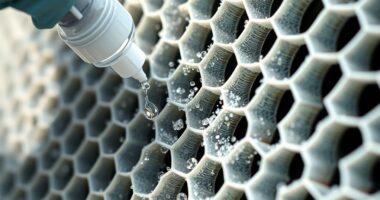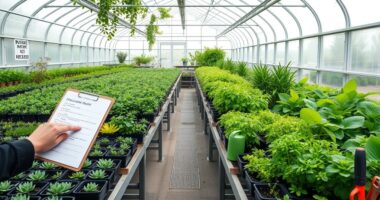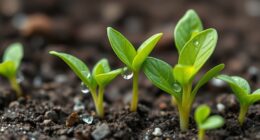To deal with algae growth in your greenhouse, control moisture and humidity by improving ventilation and adjusting irrigation practices. Clean surfaces regularly with a mild soap or a bleach solution for tougher stains. Use shade cloths to limit light exposure and reduce nutrient runoff from overwatering. Monitor water sources for contaminants, and maintain a strict cleaning schedule. With these steps, you can create a healthier environment, and there's more you can do to keep algae at bay.
Key Takeaways
- Ensure proper ventilation and airflow to lower humidity levels, reducing conditions favorable for algae growth.
- Regularly clean greenhouse surfaces with mild soap or a diluted bleach solution to eliminate existing algae.
- Maintain adequate drainage and avoid overwatering to prevent water accumulation that supports algae.
- Limit sunlight exposure by using shade cloths to restrict algae growth fueled by excess light.
- Monitor and regulate nutrient levels in irrigation water to minimize nutrient availability for algae.
Understanding the Causes of Algae Growth
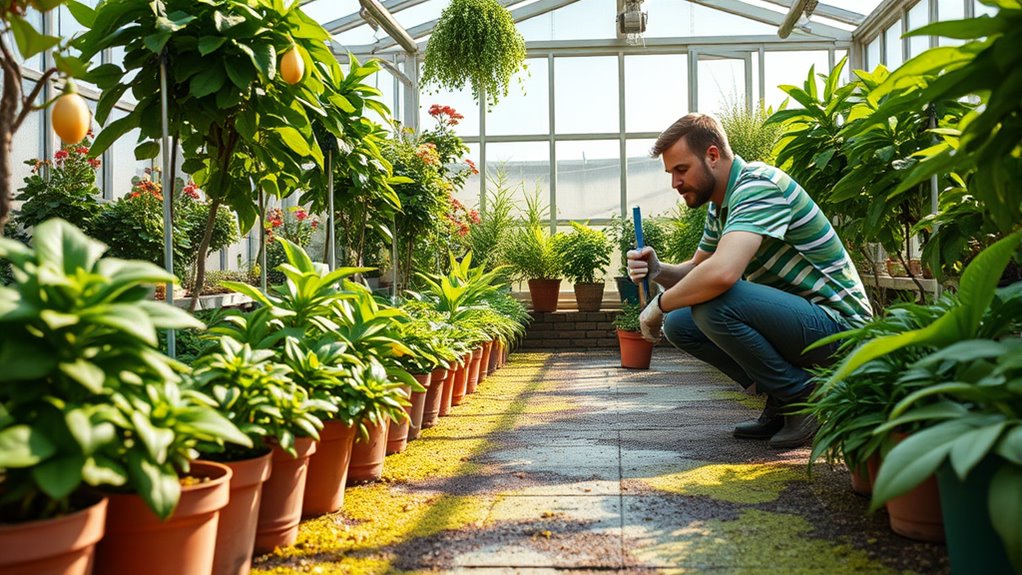
While you mightn't think about it often, understanding the causes of algae growth in your greenhouse is essential for maintaining a healthy environment for your plants.
Algae thrive in warm, humid conditions, which greenhouses often provide. They need moisture, light, and nutrients to flourish, making your greenhouse an ideal setting.
Irrigation water, especially from ponds or shallow wells, can introduce algae spores. Additionally, used pots, trays, or equipment can harbor these spores and facilitate their spread.
Dust from outdoor soil can carry spores inside, while nearby vegetation may contribute nutrients. Algae spread easily through various means, which can exacerbate the problem if not managed properly.
The rapid reproduction of algae can lead to thick colonies that compete with your plants for resources, potentially hindering their growth.
Recognizing these factors can help you manage algae effectively.
Preventative Measures to Control Algae
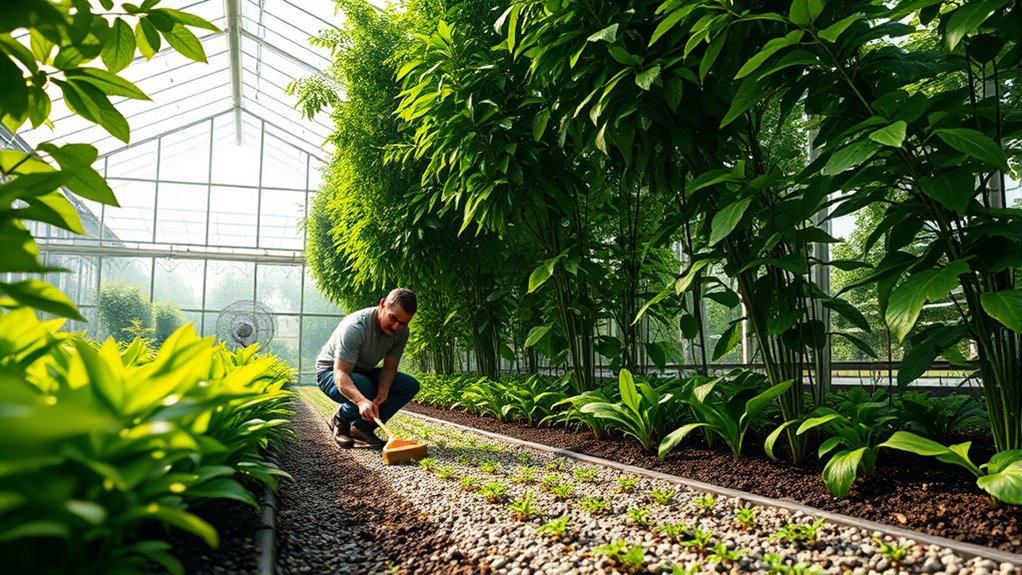
To effectively control algae growth in your greenhouse, it's crucial to implement a range of preventative measures tailored to your environment.
Start by ensuring adequate ventilation to reduce humidity and moisture levels. Use shade cloths to limit sunlight exposure, which helps restrict algae growth. Aerating ponds can also be beneficial in reducing stagnant water that promotes algae formation.
Regularly clean your greenhouse and apply anti-algae treatments to surfaces. Maintain proper drainage and level flooring to prevent water accumulation. Additionally, avoid overwatering and monitor nutrient levels in your water sources. Trim nearby vegetation to reduce debris and consider using phosphorus-free fertilizers to minimize nutrient runoff.
Lastly, utilize horizontal airflow fans to regulate temperature and promote air circulation, further hindering algae development.
Effective Cleaning Techniques for Algae Removal
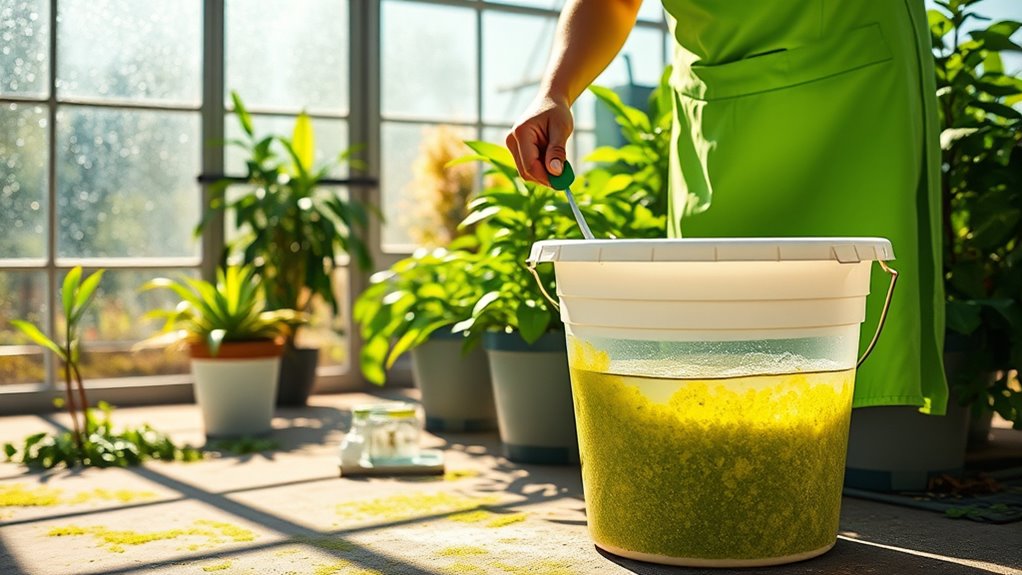
Implementing preventative measures helps keep algae at bay, but when it does appear, effective cleaning techniques are key to managing the problem.
Start with a mild soap solution for gentle cleaning, or use diluted vinegar cautiously, ensuring it won't damage surfaces. If necessary, a bleach solution (1:100) can sanitize effectively, but handle it carefully. Greenhouses provide ideal conditions for algae growth due to their warm and moist environment.
For irrigation systems, hydrogen peroxide is a safer alternative. Power washing is great for removing algae from floors and walls, but follow it with disinfection to prevent regrowth.
After cleaning, keep surfaces dry and check for signs of regrowth regularly. By scheduling consistent cleaning sessions, you'll maintain a cleaner environment and significantly reduce the chances of algae returning.
Environmental Modifications to Reduce Algae
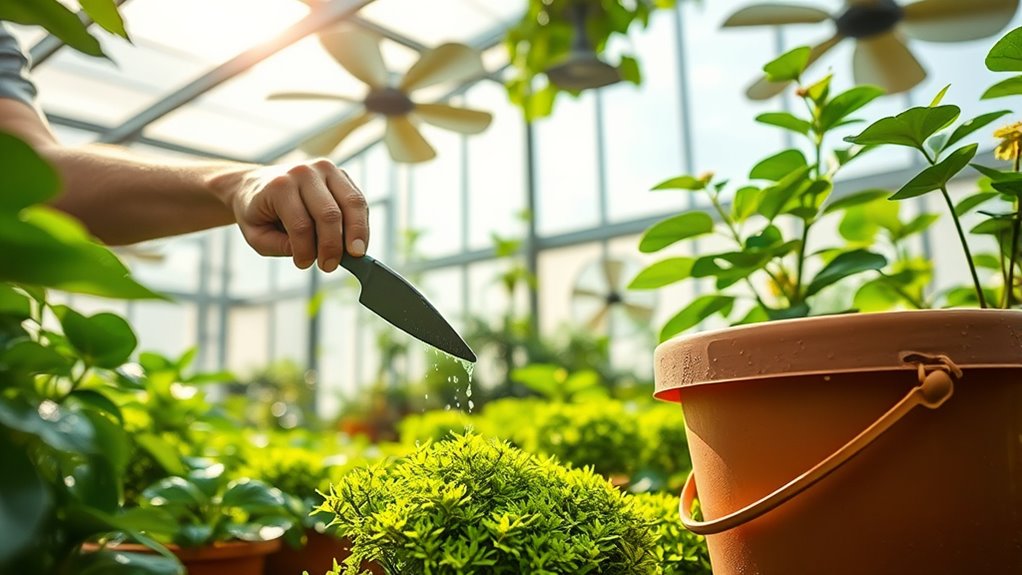
Creating an environment that minimizes algae growth involves making thoughtful modifications to your greenhouse. Start by controlling moisture; improve irrigation practices to prevent puddling. Ensure proper ventilation and airflow to lower humidity, which discourages algae development. Regulate temperatures to reduce condensation and manage light exposure, limiting the sunlight that reaches algae. Additionally, maintaining consistent line cleaning during production can help minimize the transfer of algae spores.
Consider structural changes like retractable roofs for better ventilation and use porous concrete floors to enhance drainage. Level flooring helps prevent water pooling, while covering hydroponic tanks with lids blocks light from algae. Regularly test your irrigation water for contaminants and adjust watering schedules to avoid standing water. By implementing these environmental modifications, you'll create an inhospitable environment for algae growth and promote healthier plants.
Management Strategies for Algae Prevention

While managing algae growth in your greenhouse might seem challenging, adopting effective strategies can significantly minimize its occurrence.
Start by implementing regular sanitation practices; clean and disinfect surfaces, equipment, and floors to keep algae at bay. Ensure your water sources are clean and free from contaminants. Avoid excessive fertilization to reduce nutrient availability for algae.
Educate your staff on proper watering techniques and maintenance practices to prevent buildup. Consider using shade cloths to limit sunlight exposure and applying commercial anti-algae treatments on surfaces.
Regularly inspect for early signs of algae and trim nearby vegetation to reduce debris. By consistently following these management strategies, you'll create a healthier environment for your plants and curtail algae growth effectively.
Long-term Solutions for a Healthy Greenhouse
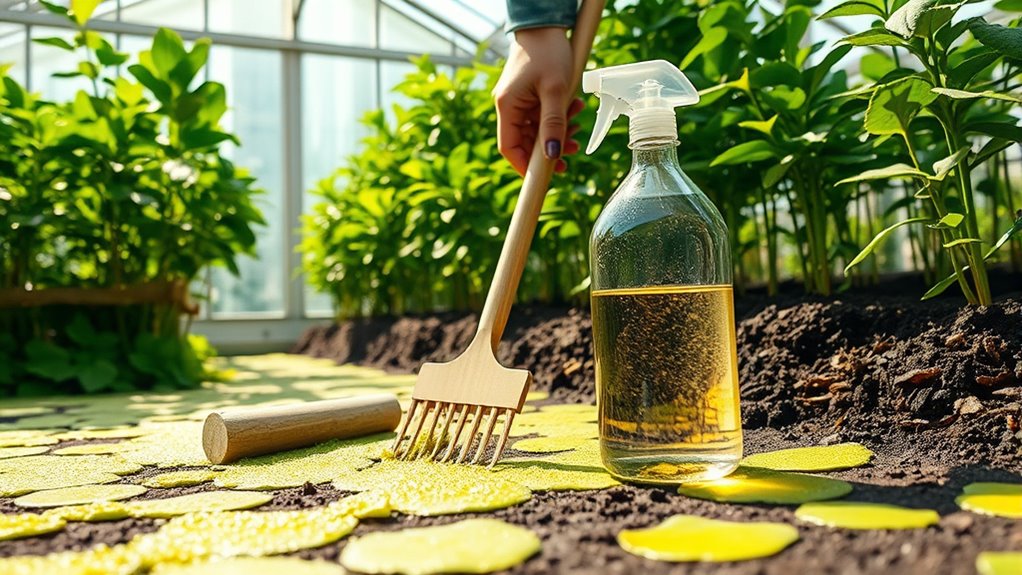
To ensure a thriving greenhouse in the long run, you need to focus on sustainable practices that promote plant health and environmental balance.
Start by using eco-friendly materials like reclaimed wood or bamboo for your structure. Optimize your greenhouse's orientation for even sunlight and incorporate reflective surfaces to minimize shadows. Additionally, adopting sustainable practices like composting systems can enhance soil health and reduce waste. Consider integrating solar panels to harness renewable energy for your greenhouse operations. The use of renewable energy sources can significantly lower your greenhouse's environmental impact. Furthermore, implementing energy-efficient systems can help reduce operational costs while supporting sustainability.
Implement energy-efficient systems, such as combined heat and power (CHP) or renewable energy sources, to reduce your carbon footprint.
For water management, consider rainwater harvesting and drip irrigation to conserve resources.
Regularly monitor temperature, humidity, and air quality with automated controls to maintain optimal conditions.
Finally, establish composting systems and practice companion planting to recycle nutrients naturally and support healthy growth.
Frequently Asked Questions
How Often Should I Check for Algae Growth in My Greenhouse?
You should check for algae growth regularly to keep your greenhouse healthy. Aim for at least annual inspections, ideally at the start of the growing season.
Weekly checks around mist systems and benches can help catch any growth early. Don't forget to clean gutters annually, as they can harbor algae.
Monitoring water quality is essential too, as it plays a significant role in preventing algae. Frequent checks can help you stay ahead of potential issues.
Can Certain Plants Help Prevent Algae Growth?
Certain plants can indeed help prevent algae growth. By choosing dense ground covers or shade-producing plants, you can limit sunlight exposure and reduce algae's energy sources.
Additionally, some plants naturally absorb excess nutrients, contributing to a healthier environment. Incorporating varieties like ferns or certain herbs can also help maintain moisture levels, creating a balanced ecosystem that discourages algae proliferation.
What Are the Signs of Excessive Algae Growth?
You know the saying, "an ounce of prevention is worth a pound of cure."
When it comes to excessive algae growth, look for visual signs like green or black layers on surfaces and a slippery crust that can pose safety hazards.
Check if equipment and walkways are covered, as this can reduce light transmission.
If you notice these indicators, it's time to address the problem before it impacts your plants and operations.
Is Algae Growth Harmful to My Plants?
Algae growth isn't directly harmful to your plants, but it can slow their development.
When algae cover the substrate, it reduces gas exchange, which impacts root growth. They also compete for nutrients, limiting your plants' potential.
If algae grow on greenhouse coverings, they block light, affecting plant health. Additionally, algae can attract pests that might damage your plants.
How Does Algae Affect Greenhouse Temperatures?
Algae affects greenhouse temperatures by blocking sunlight, which reduces heat penetration and can hinder your plants' growth.
When algae proliferate, they increase humidity levels, altering the internal temperature of your greenhouse.
This excess moisture can lead to poor air circulation, exacerbating temperature fluctuations.
To maintain optimal growing conditions, it's crucial to manage algae growth effectively, ensuring your plants receive adequate light and stable temperatures for healthy development.
Conclusion
By taking proactive steps to manage algae growth, you can maintain a healthier greenhouse environment. It might seem daunting at first, but with the right strategies in place, you'll find it's easier than you think. Don't let the fear of dealing with algae hold you back from enjoying your gardening journey. Embrace these solutions, and you'll not only keep your plants thriving but also create a more inviting space for your green dreams to flourish.



